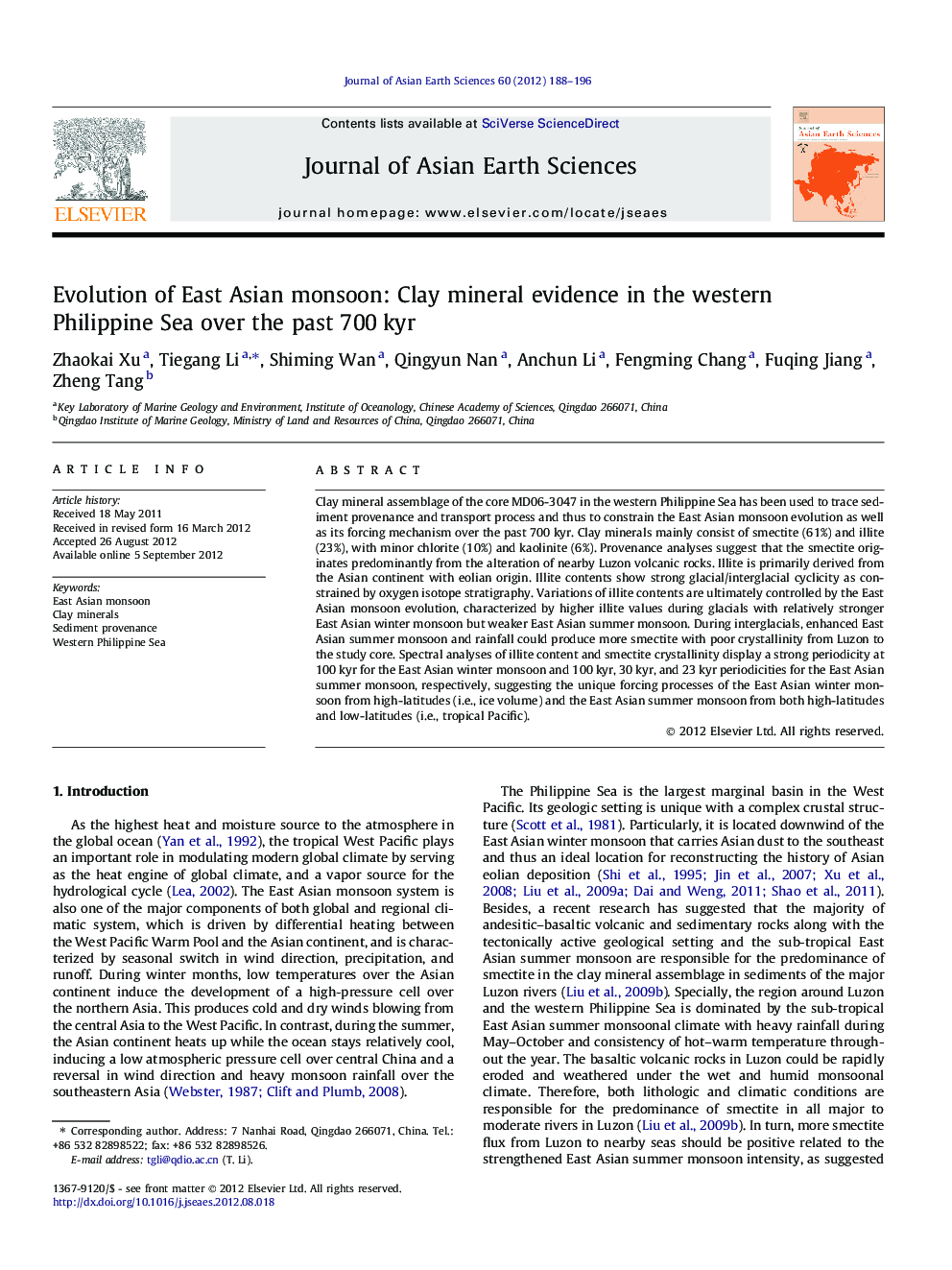| کد مقاله | کد نشریه | سال انتشار | مقاله انگلیسی | نسخه تمام متن |
|---|---|---|---|---|
| 4731089 | 1640405 | 2012 | 9 صفحه PDF | دانلود رایگان |

Clay mineral assemblage of the core MD06-3047 in the western Philippine Sea has been used to trace sediment provenance and transport process and thus to constrain the East Asian monsoon evolution as well as its forcing mechanism over the past 700 kyr. Clay minerals mainly consist of smectite (61%) and illite (23%), with minor chlorite (10%) and kaolinite (6%). Provenance analyses suggest that the smectite originates predominantly from the alteration of nearby Luzon volcanic rocks. Illite is primarily derived from the Asian continent with eolian origin. Illite contents show strong glacial/interglacial cyclicity as constrained by oxygen isotope stratigraphy. Variations of illite contents are ultimately controlled by the East Asian monsoon evolution, characterized by higher illite values during glacials with relatively stronger East Asian winter monsoon but weaker East Asian summer monsoon. During interglacials, enhanced East Asian summer monsoon and rainfall could produce more smectite with poor crystallinity from Luzon to the study core. Spectral analyses of illite content and smectite crystallinity display a strong periodicity at 100 kyr for the East Asian winter monsoon and 100 kyr, 30 kyr, and 23 kyr periodicities for the East Asian summer monsoon, respectively, suggesting the unique forcing processes of the East Asian winter monsoon from high-latitudes (i.e., ice volume) and the East Asian summer monsoon from both high-latitudes and low-latitudes (i.e., tropical Pacific).
► Core MD06-3047 covers an age period over the past 700 kyr.
► Typical clay mineral indices show obvious glacial/interglacial change patterns.
► Eolian illite input is mainly controlled by the EAWM evolution.
► Smectite contribution should be closely related to the EASM intensity.
► Spectra of typical clay mineral indices clearly show the Milankovitch periods.
Journal: Journal of Asian Earth Sciences - Volume 60, 22 October 2012, Pages 188–196